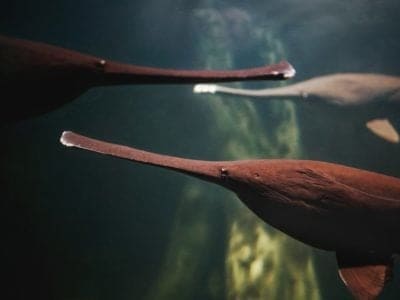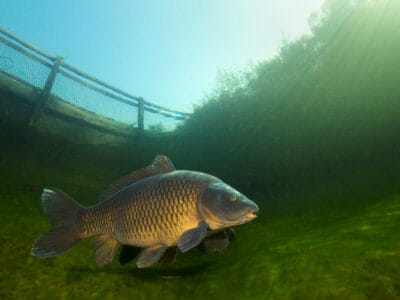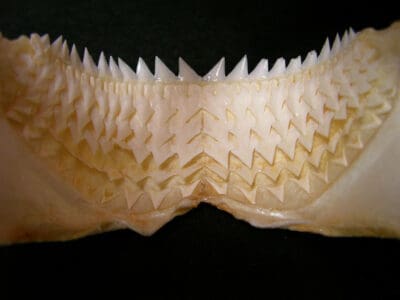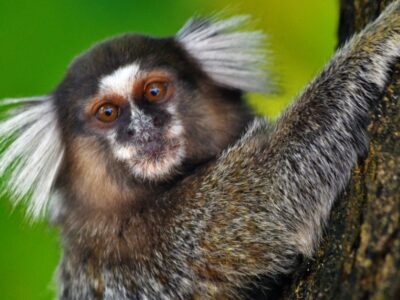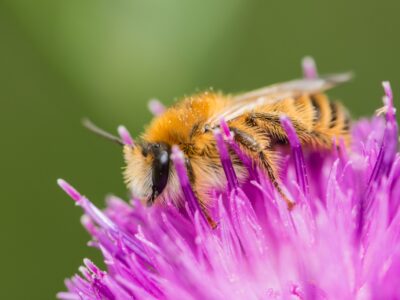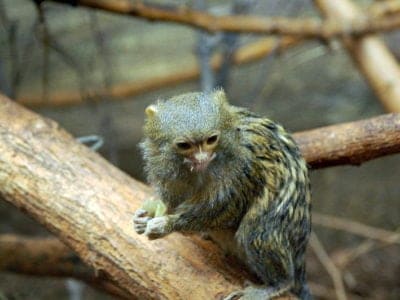Vulnerable species are at risk of becoming extinct in the wild or extinct. The IUCN currently identifies over 10,000 species as vulnerable. For a species to be considered vulnerable it must meet any of the following criteria:
Population Reduction
- A taxon’s population size is reduced by 50 percent or more over 10 years or three generations, whichever is longer, and scientists understand that the reduction causes are reversible and have stopped. For example, let’s pretend there is a bird species that traditionally had a population of 2000. Over 10 years, it drops to 1000 because a logging company demolished its habitat. If lawmakers establish regulations that bar the logging company from continuing to fell trees in the area, then the IUCN will list the bird species as “endangered” because they understand the reason for the decline, and it is stopped.
- A taxon’s population size is reduced by 30 percent or more over 10 years or three generations, whichever is longer. However, conservationists don’t understand the reduction cause or know if it is reversible. For example, let’s say there is a bird species that traditionally had a population size of 2000. Over 10 years, it drops to 1400. Scientists, however, can’t figure out why they’re dying off. In this case, the IUCN would list it as “endangered” because the decimation is evident, but it can’t figure out why.
- A taxon’s population size is reduced by 30 percent or more over 10 years or three generations, whichever is longer, and the animal is also battling habitat shrinkage or another threat.
Geographic Reduction
The area where a species can live is reduced to 20,000 square kilometers or less, or the area where it currently and actually occupies is reduced to 2,000 square kilometers, and at least two of the following criteria are also true:
- The population is not known to exist at more than 10 locations.
- Scientists observe or predict that the habitat in question will continue to shrink or be degraded, and there’s also a decline in subpopulations or the number of reproducing adults.
- Scientists observe extreme fluctuations in the number of locations, subpopulations, or the number of reproducing adults.
Dangerously Low Number of Adults
- A taxon’s population only has 10,000 or fewer adults left, and a 10 percent decline is anticipated within 10 years or three generations, whichever is longer. If none of the taxon’s subpopulations contain more than 1,000 adults, or all the adults live in one subpopulation.
- Scientists observe extreme fluctuations in the number of mature adults in a taxon’s population.
Dangerously Low Overall Population Size
Only 1,000 or fewer individuals of a taxon remain.
A population with a viable but restricted habitat area is vulnerable to human activities within a very short period and thus may become critically endangered or extinct in the near future.
Expected Rapid Decline
Research indicates that there’s a 10 percent or greater chance that the taxon will be extinct in the wild within 100 years
Vulnerable Species
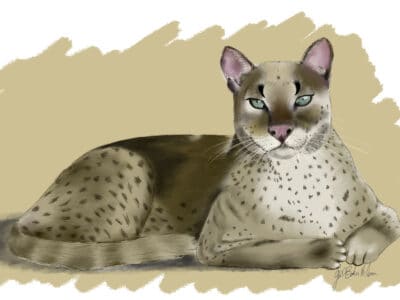
African Golden Cat
The first image of an African golden cat was captured in the wild in Gabon in 2002.
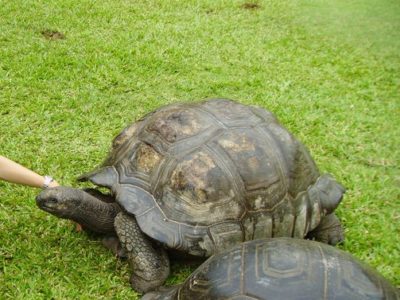
Aldabra Giant Tortoise
One got to be 255 years old!
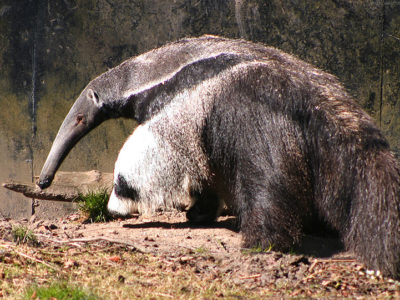
Anteater
Has the longest tongue of any animal in relation to its body size!
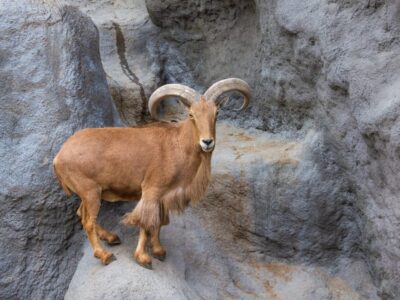
Aoudad Sheep
More aoudad sheep live in the United States than in their original North African habitat.
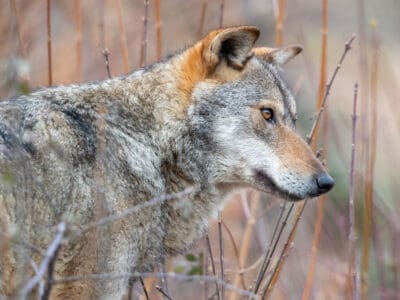
Apennine Wolf
Wolves do not howl at the moon. They howl to communicate with other members of their pack.
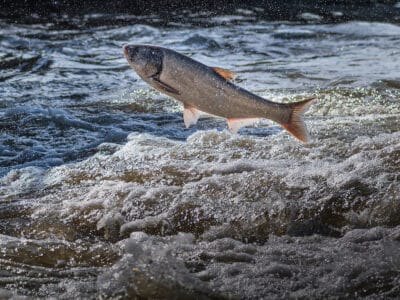
Asian Carp
Asian carp can consume 40% of their body weight in food a day!
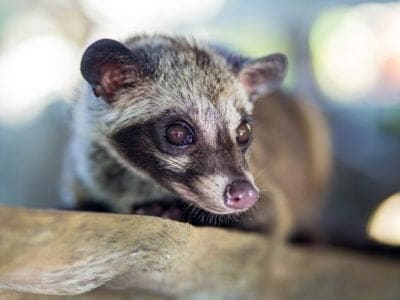
Asian Palm Civet
It mainly eats mangos and coffee!
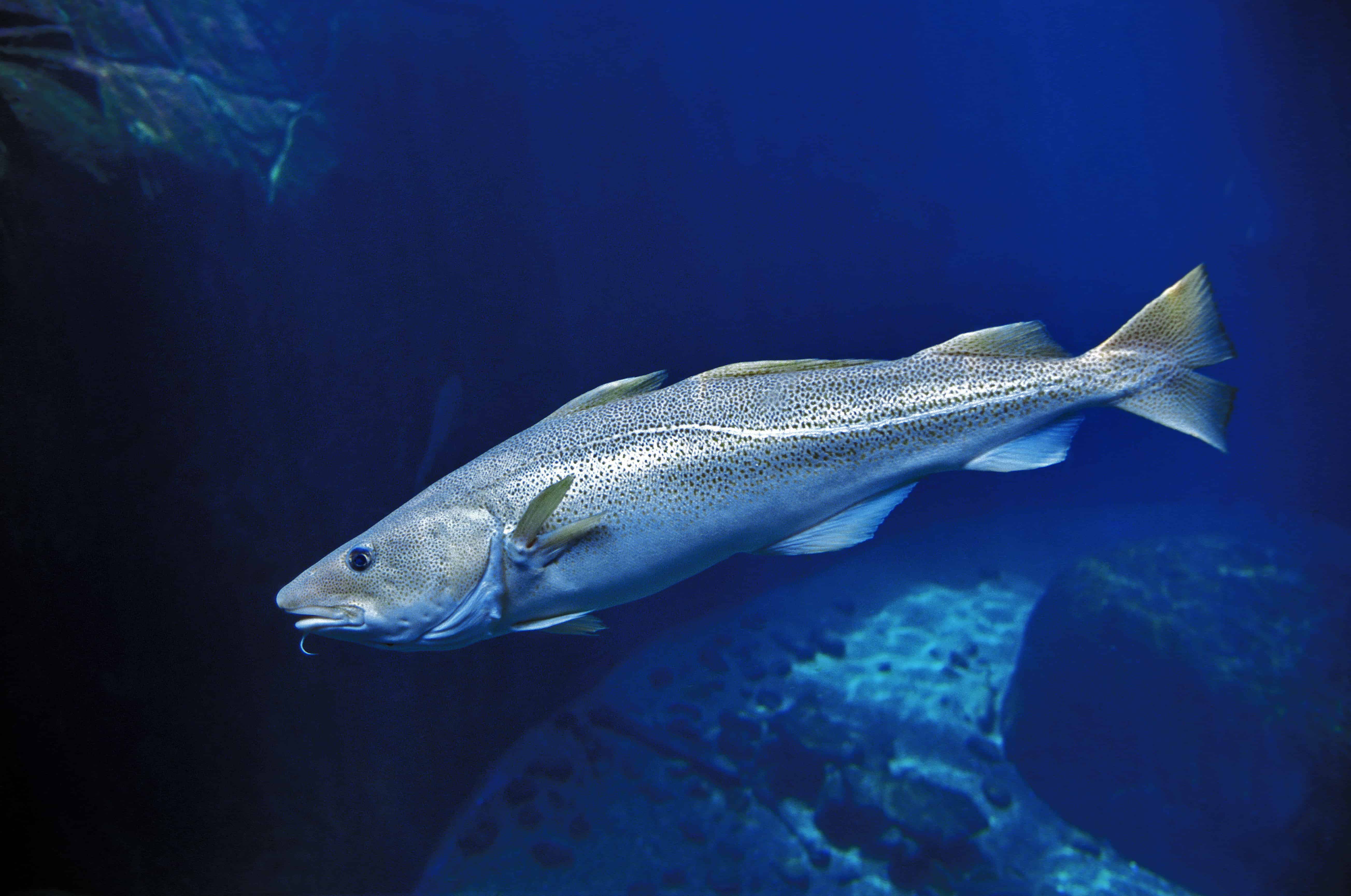
Atlantic Cod
One of the most popular food fishes in the world
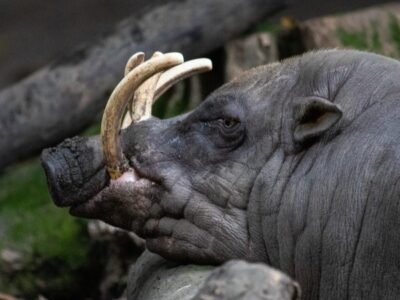
Babirusa
The babirusa is the only mammal with vertically growing canine teeth!
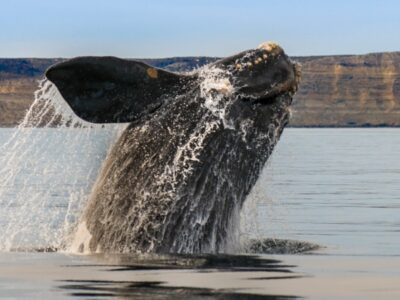
Baleen Whale
“Sings” a whale song during breeding season.
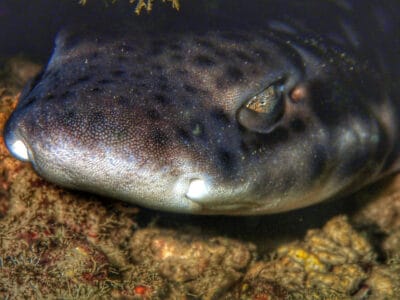
Bamboo Shark
Can reproduce asexually
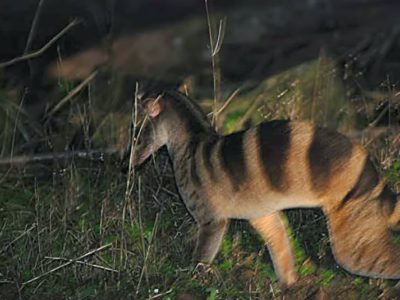
Banded Palm Civet
Markings give it camouflage!
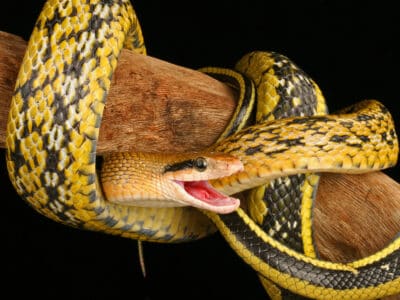
Beauty rat snake
Beauty Rat Snakes are relatively harmless if left undisturbed, only attempting to bite out of fear.
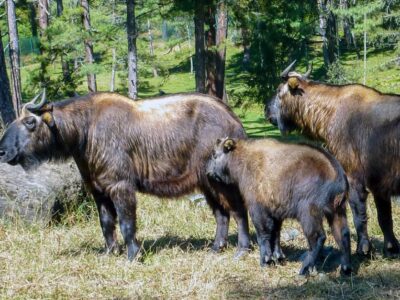
Bhutan Takin
Live in bamboo forests 15,000 feet above sea level
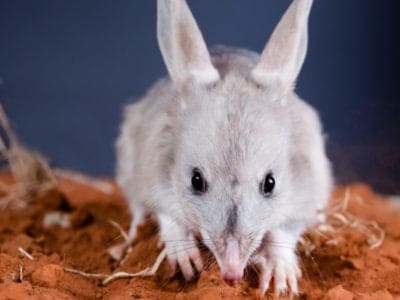
Bilby
In Australia, the chocolate bilby replaces the chocolate bunny for Easter.
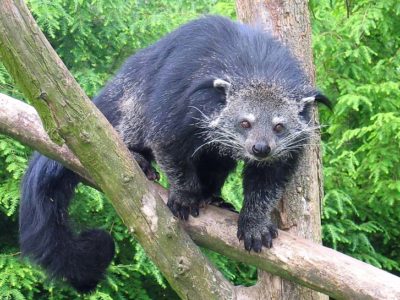
Binturong
Also known as the Asian Bearcat!
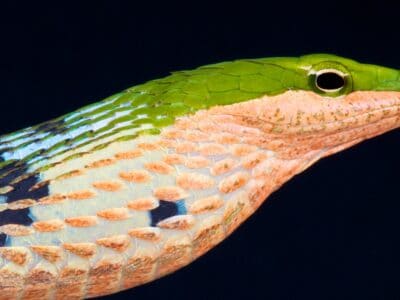
Bird Snake
Usambara vine snakes sit perfectly still and sway in the wind like a stick.
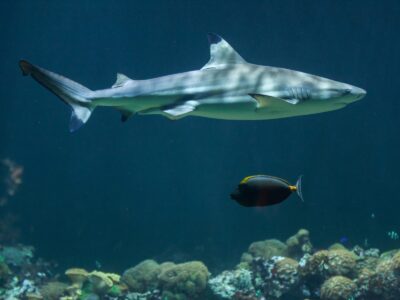
Blacktip Reef Shark
They move in and out of mangrove swamps with the tides.
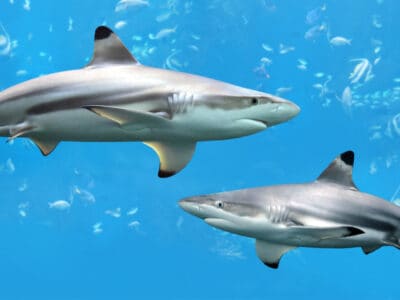
Blacktip Shark
One of the most commonly-encountered sharks
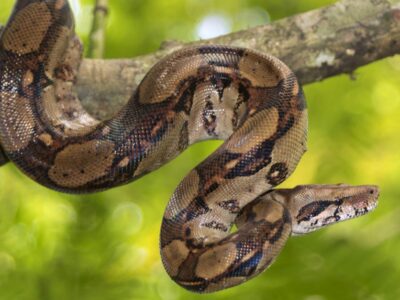
Boas
Boas are considered primitive snakes and still have vestigial legs, called spurs.
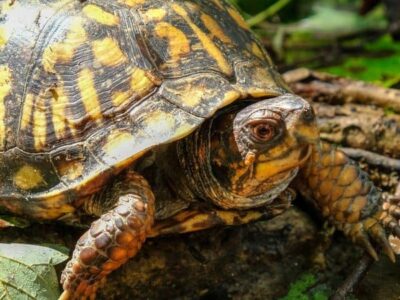
Box Turtle
This reptile has an S-shaped neck allowing it to pull its entire head into its shell.
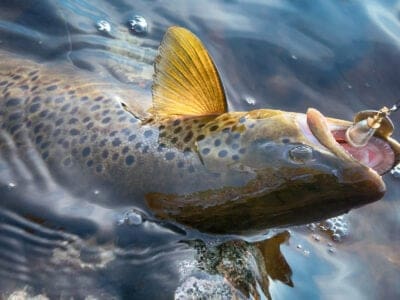
Bull Trout
The bull trout is not actually a trout, but a member of the char family.
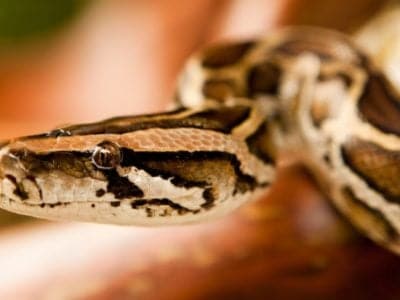
Burmese Python
These snakes can swallow their prey as whole.
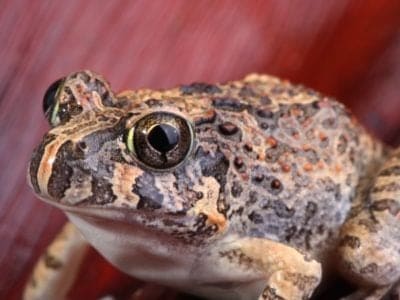
Burrowing Frog
Found close to marshes, streams and lakes!
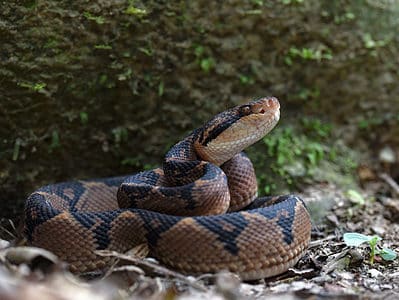
Bushmaster Snake
The bushmaster’s scientific name means “silent death.”
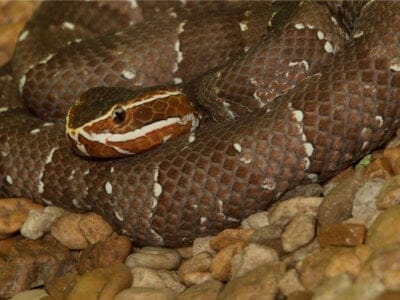
Cantil
Cantils heads are marked with bright white lines on each side of their heads.
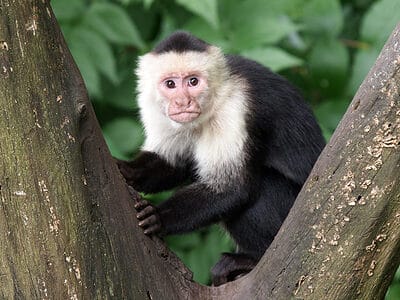
Capuchin
Named after Capuchin friars.
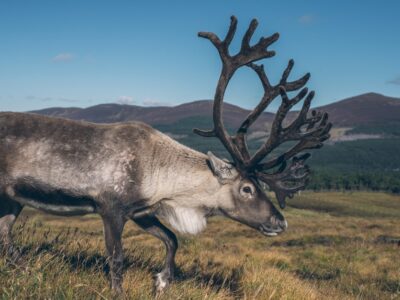
Caribou
Males and females grow antlers
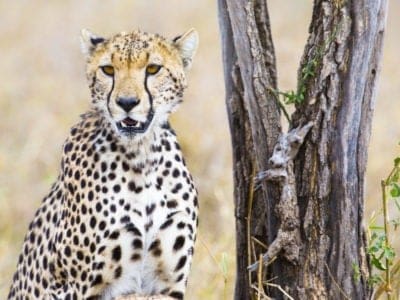
Cheetah
The fastest land mammal in the world!
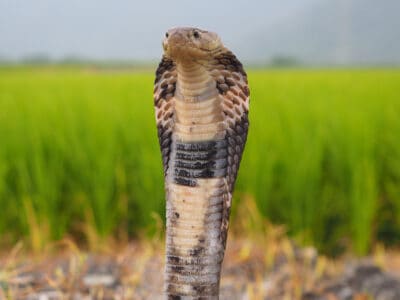
Chinese Cobra
Juvenile Chinese cobras have the ability to start hunting almost from the moment they hatch from the eggs.
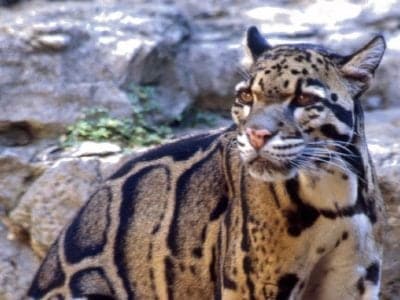
Clouded Leopard
Has canines that can be two inches long!
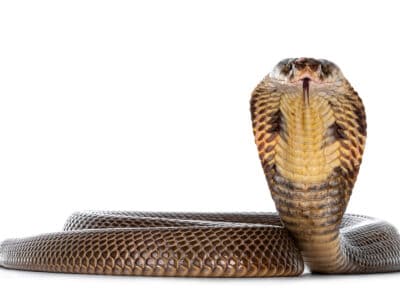
Cobras
Several medicines have been created using cobra venom.
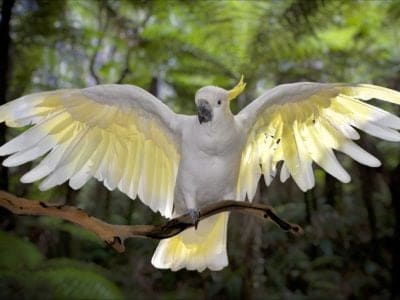
Cockatoo
Highly social, smart, and chatty bird.
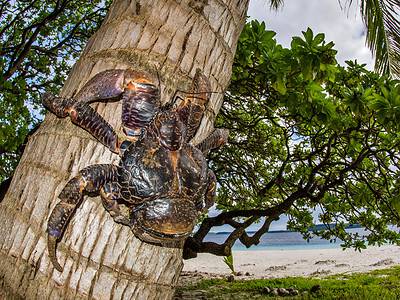
Coconut Crab
The largest terrestrial arthropod in the world
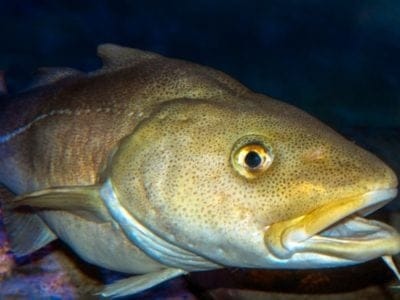
Codfish
Codfish are carnivorous and eat other fish, including young codfish.
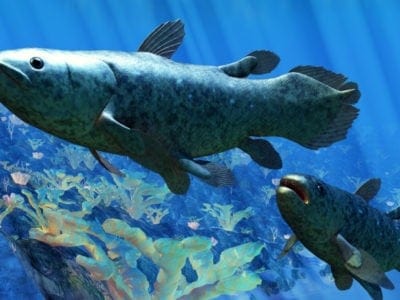
Coelacanth
The coelacanth first evolved almost 400 million years ago.
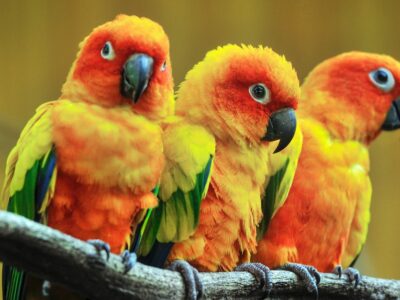
Conure
They are intelligent and noisy, often mimicking sounds and learning vocabulary.
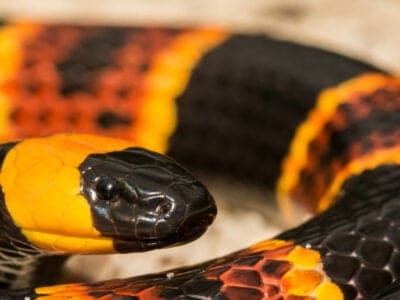
Coral Snake
There are over 80 species of coral snake worldwide.
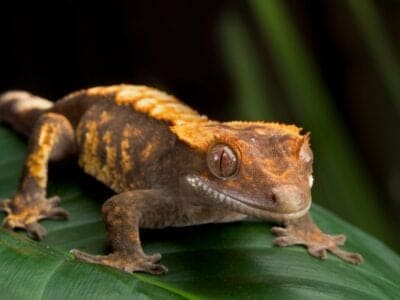
Crested Gecko
The crested gecko can walk on glass and even has a prehensile tail.
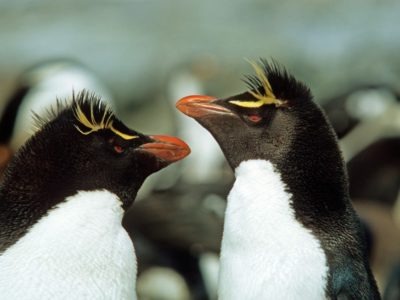
Crested Penguin
Has long yellow eyebrows!
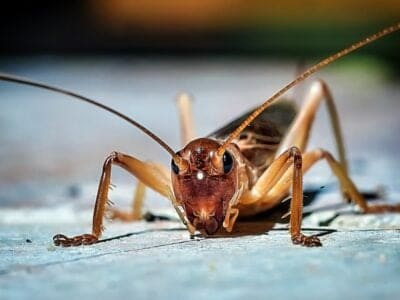
Cricket
Male crickets can produce sounds by rubbing their wings together
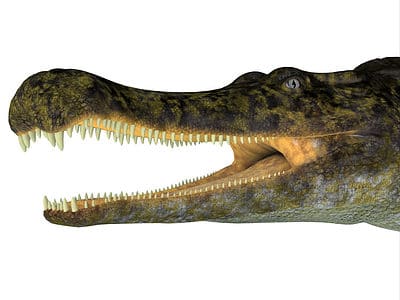
Crocodylomorph
Crocodylomorphs include extinct ancient species as well as 26 living species today.
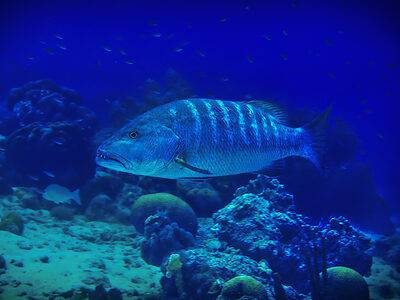
Cubera Snapper
While very intimidating, the cubera snapper also falls prey to other marine animals like barracudas, whale sharks, and moray eels.
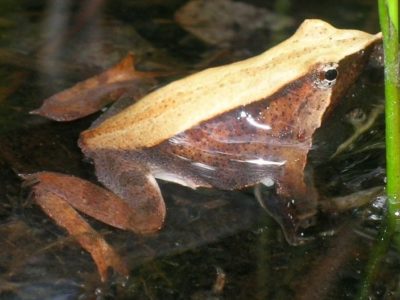
Darwin’s Frog
Camouflages itself as a dead leaf!
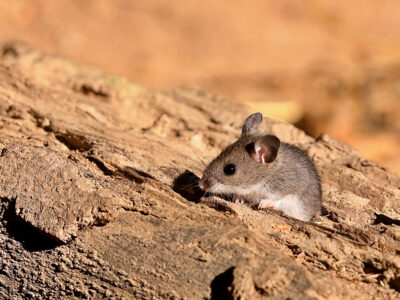
Deer Mouse
Roughly 60 different species of deer mice range from Canada to Central America!
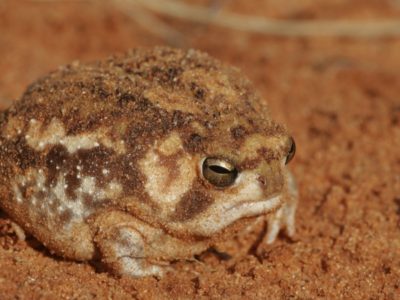
Desert Rain Frog
The desert rain frog doesn't hop
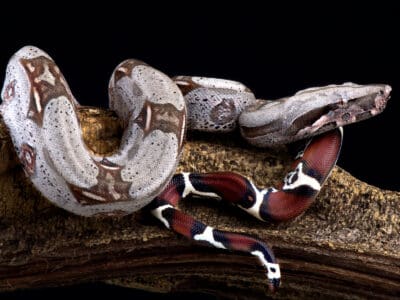
Dwarf Boa
Some species can change color from dark to light, and back again.
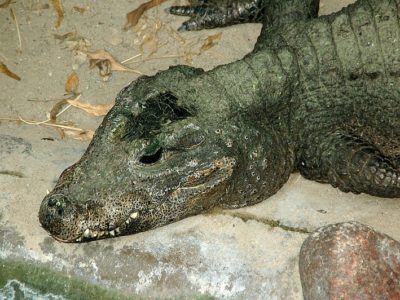
Dwarf Crocodile
Digs burrows in river banks to rest!
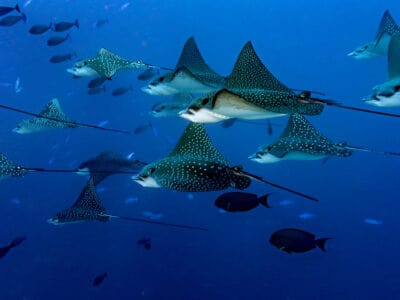
Eagle Ray
Majestic underwater bird like fish
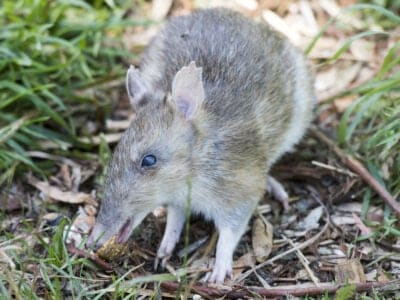
Eastern Barred Bandicoot
Digs funnel-shaped holes in search of insects

Eastern Box Turtle
When injured or damaged, the shell of the eastern box turtle can regenerate
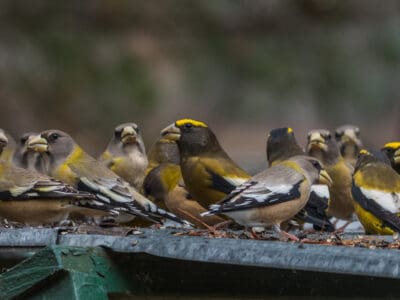
Evening Grosbeak
They are friendly and non-aggressive to those in their species.
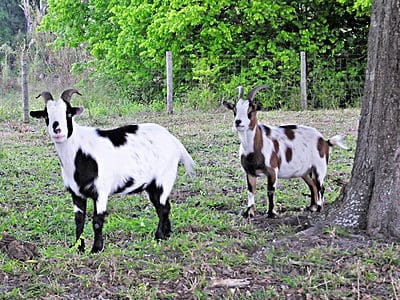
Fainting Goat
Frightening this goat will cause it to fall over in fear!
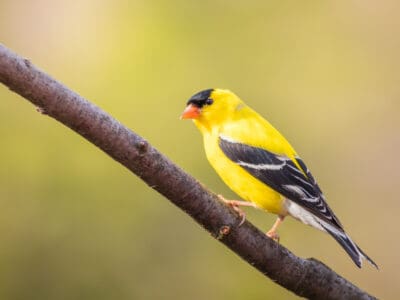
Finch
Finches have strong, conical bills that help them break open tough seeds that many other birds cannot.
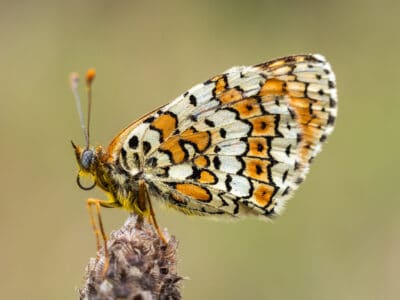
Fritillary Butterfly
Some emit noxious defense chemicals
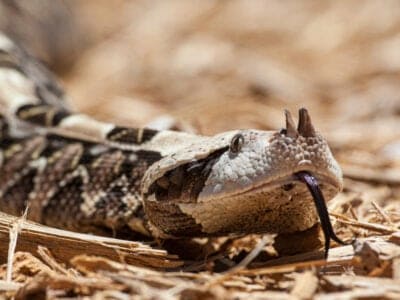
Gaboon Viper
Gaboon vipers are the largest vipers in Africa.
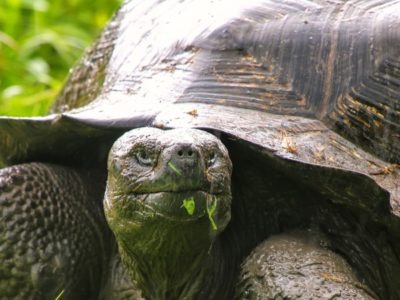
Galapagos Tortoise
The biggest species of tortoise in the world!
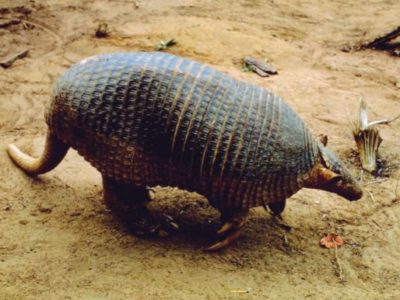
Giant Armadillo
Armadillos have a smell that’s described as strong, sweet and acrid.
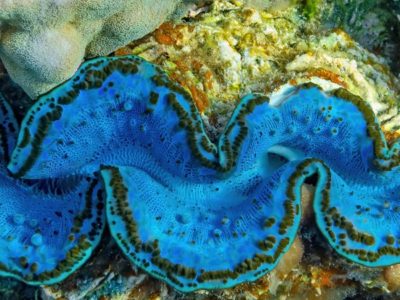
Giant Clam
Can reach nearly 4ft in length!
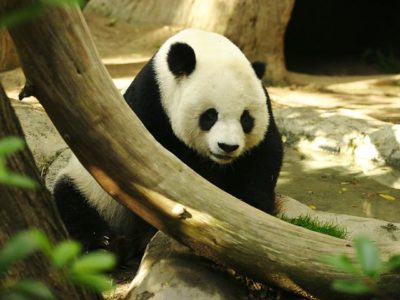
Giant Panda Bear
Bamboo makes up 99 per cent of their diet!
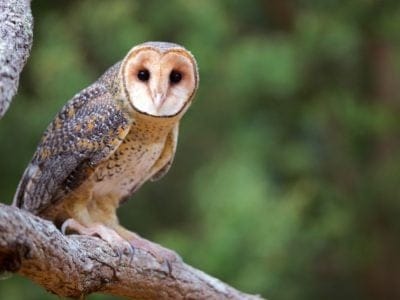
Golden Masked Owl
While flying high above this owl can hear a mouse moving in the tall grass of field!
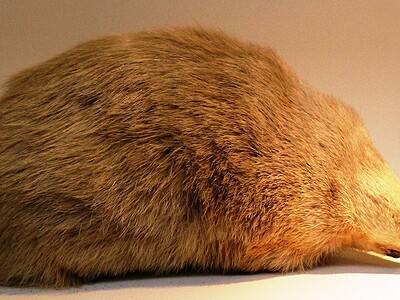
Golden Mole
The golden mole is so named because of its iridescent coat, which gives it a shining, rainbow-like effect.
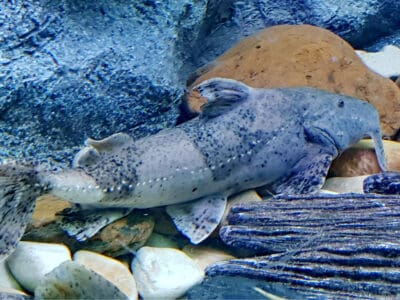
Goonch Catfish
The goonch catfish, or giant devil catfish, is one of the most fierce freshwater fish.
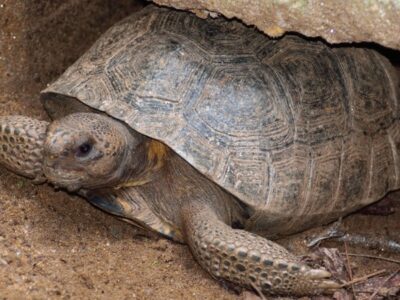
Gopher Tortoise
It is the only species of tortoise native to Florida.
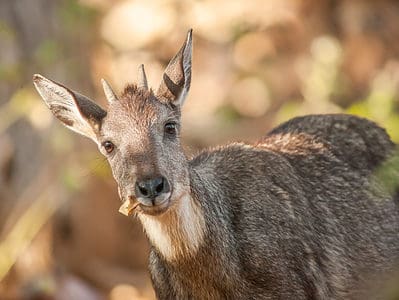
Goral
A mix between a goat and an antelope
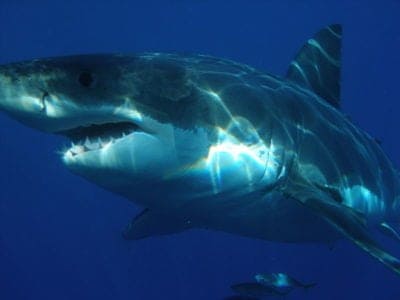
Great White Shark
Can grow to more than 8 meters long!
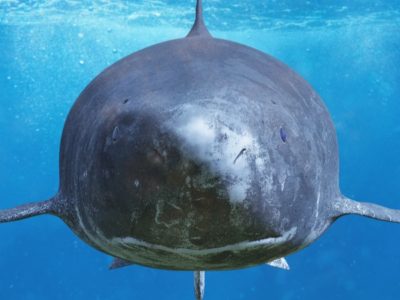
Greenland Shark
This shark has the longest lifespan of any vertebrate.
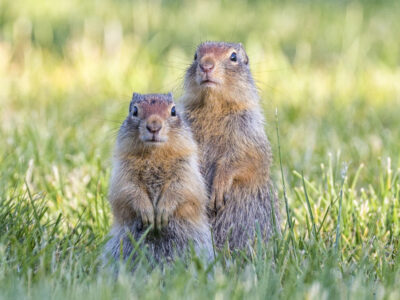
Ground Squirrel
Ground squirrels are adept excavators and can dig colonial burrows larger than football fields!
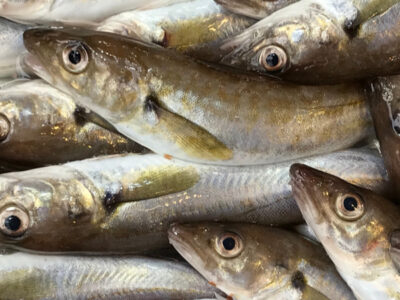
Haddock
The haddock is very popular in both recreational and commercial fishing
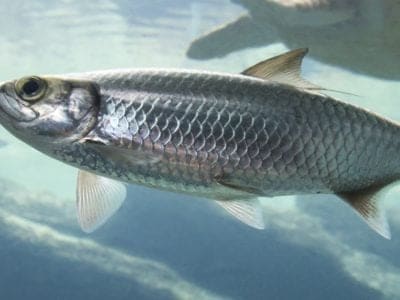
Herring
People enjoy the taste of the oily fish in many different ways including pickled, smoked, salted, dried and fermented.
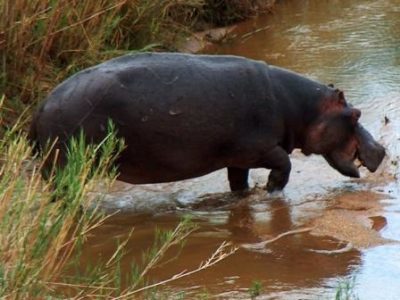
Hippopotamus
Has pink anti-bacterial sweat!
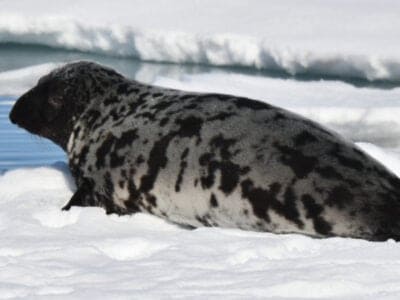
Hooded Seal
Hooded seal pups are called bluebacks because the color of the fur on their back is blue-gray. This pretty color made people want to make fur coats out of them and made them a target for hunters.
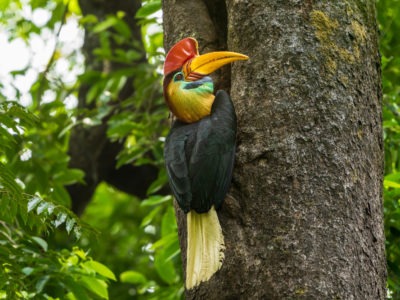
Hornbill
The bird has a massive horn on its bill!
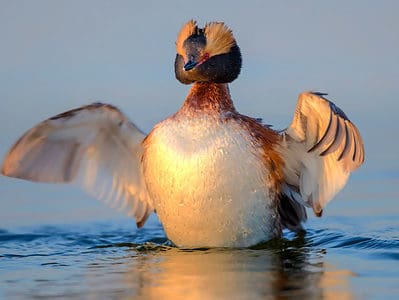
Horned Grebe
Sleep with one foot tucked up under the wing so they lean to the side
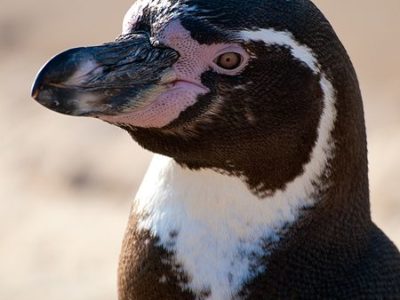
Humboldt Penguin
Found on the South American coast!
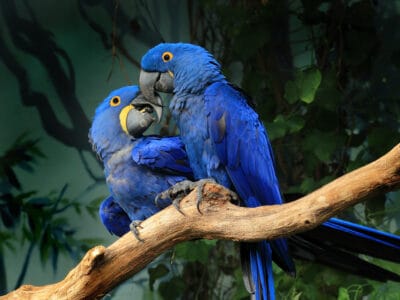
Hyacinth Macaw
The Hyacinth Macaw is the largest flying parrot in the world!
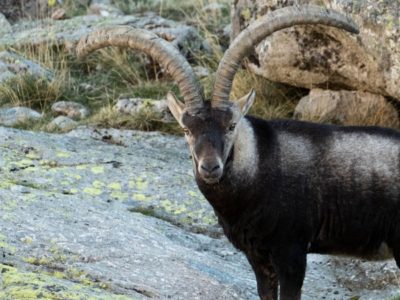
Ibex
Can jump over 6 feet straight up from a standstill
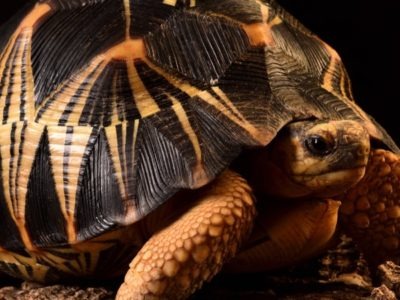
Indian Star Tortoise
Popular in the exotic pet trade!
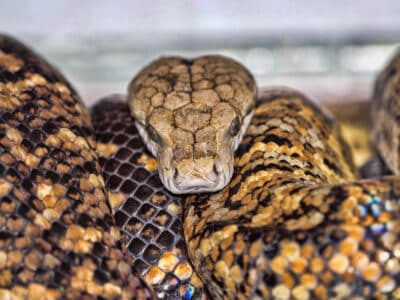
Jamaican Boa
When a Jamaican boa is coiled up, it almost looks like two snakes together because of color pattern.
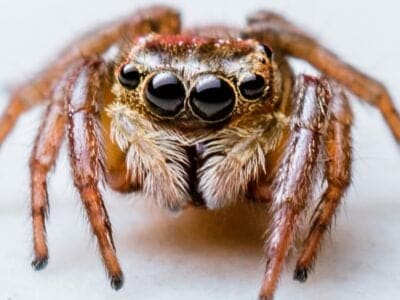
Jumping Spider
Some can jump 50 times the length of their bodies
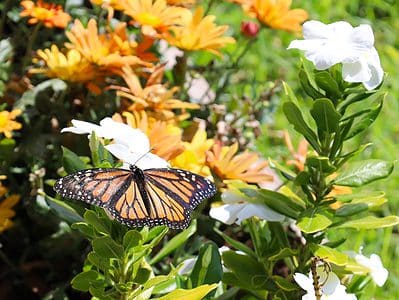
Kamehameha Butterfly
State insect of Hawaii
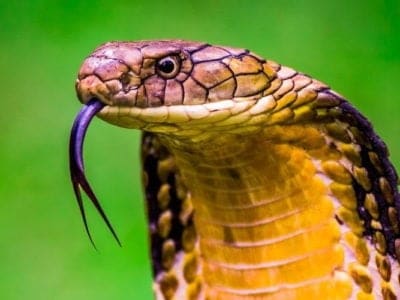
King Cobra
They are the longest venomous snake in the world.

Kodkod
The kodkod is among the smallest species of cats in the entire world
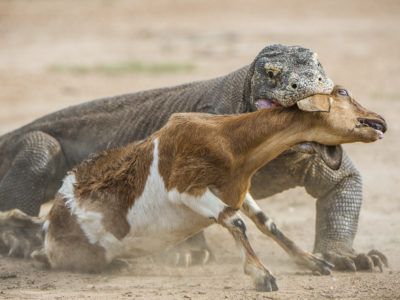
Komodo Dragon
Only found on five Indonesian islands
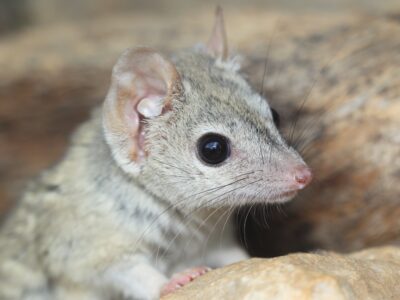
Kowari
Kowaris do not drink or take water; all they get is the water content in their diet.
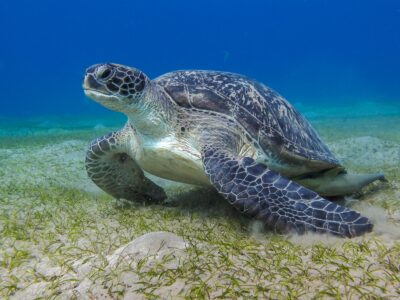
Leatherback Sea Turtle
They are the largest living turtle and the only sea turtle without a hard shell!
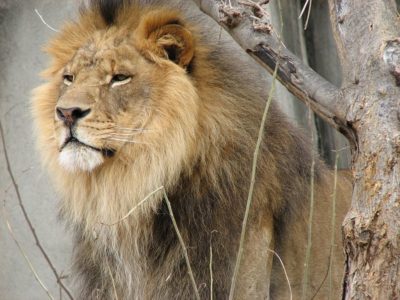
Lion
Lives in small groups called prides!
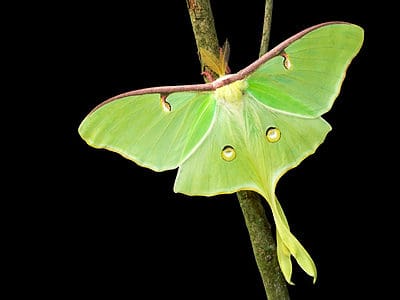
Luna Moth
N/A
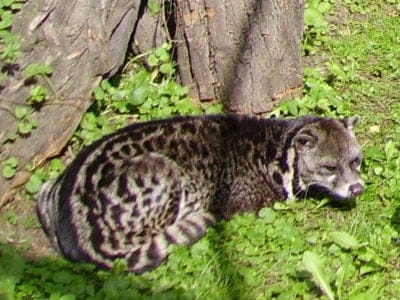
Malayan Civet
Also known as the Oriental Civet!
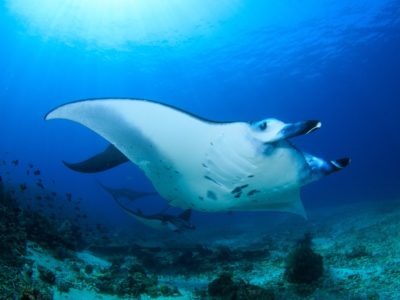
Manta Ray
Can grow up to 9m wide!
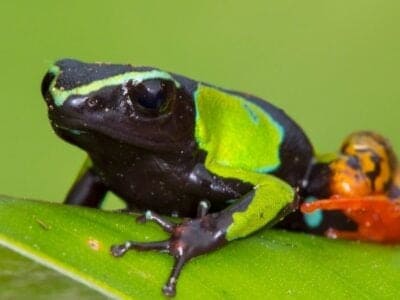
Mantella Frog
Some of the smallest and most brightly colored frogs in the world
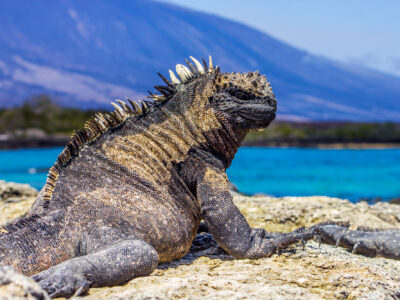
Marine Iguana
Adult marine iguanas vary in size depending on the size of the island where they live.
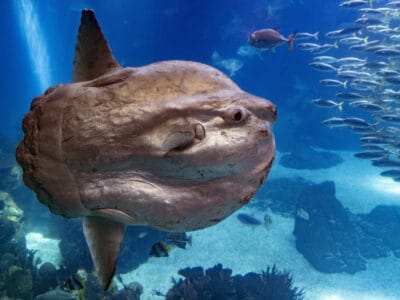
Mola mola (Ocean Sunfish)
The ocean sunfish is the biggest bony fish in the world
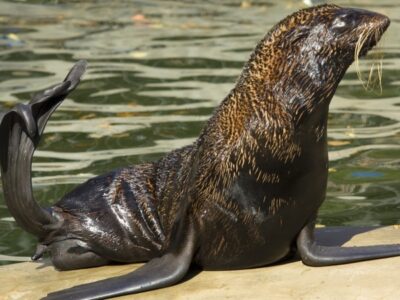
Northern Fur Seal
Dense underfur means they don’t need blubber to stay warm

Oenpelli python
Oenpelli pythons are unusually thin for a python.
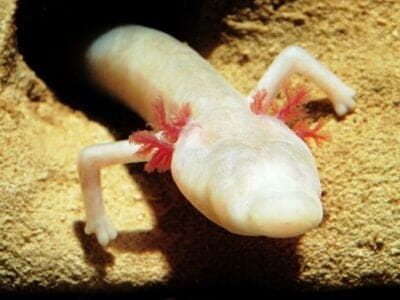
Olm
Inhabits dark underwater caves
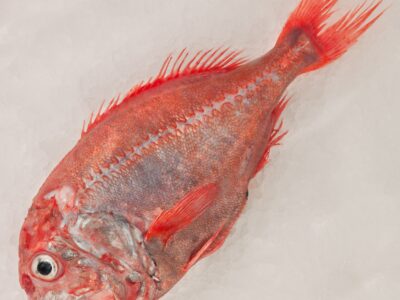
Orange Roughy
One of the oldest commercially harvested fish
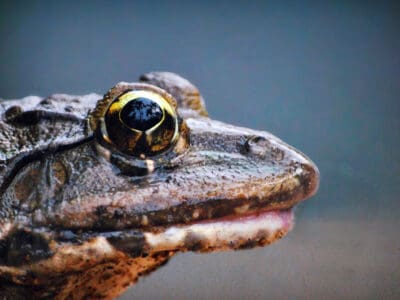
Oregon Spotted Frog
Oregon spotted frogs are the most endangered frogs in Canada!
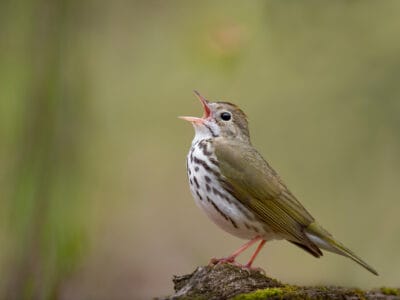
Ovenbird
The ovenbird is named for its unusual nest, which is shaped like an oven!
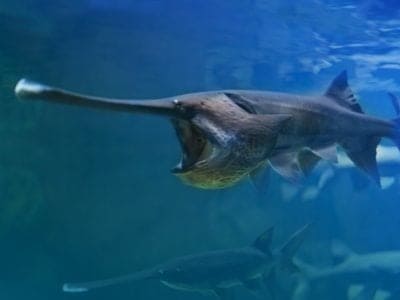
Paddlefish
Paddlefish have existed since the Cretaceous Period
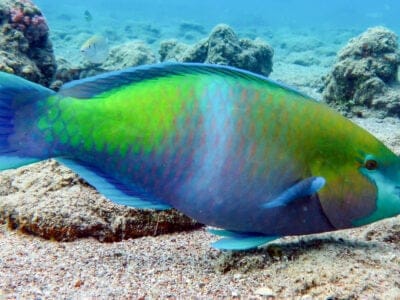
Parrotfish
The parrotfish can change from female to male at some point in its life.
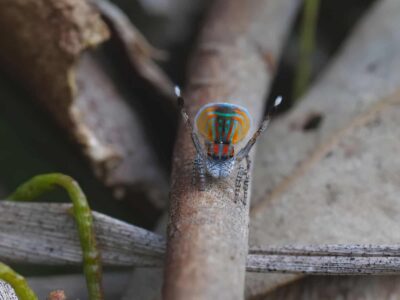
Peacock Spider
They can jump up to 10 centimeters (40 times their body size) and see the full rainbow spectrum of light, including UV.
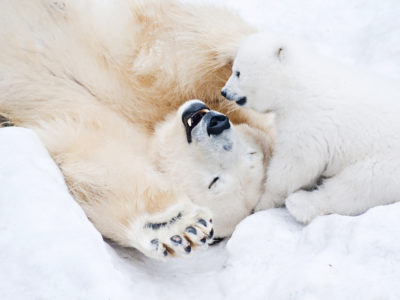
Polar Bear
Could be extinct within the next 30 years!
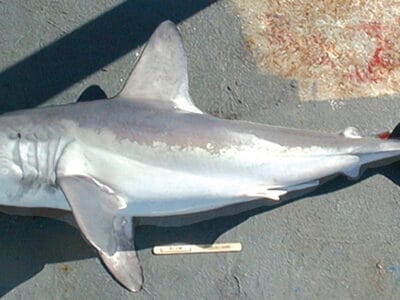
Porbeagle Shark
The porbeagle is one of the few sharks that jumps out of the water

Potoroo
They can carry items with their tail.
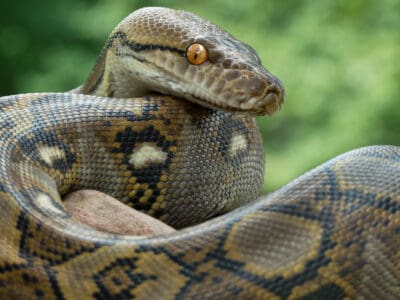
Python
Female pythons lay eggs and defend them until they hatch.
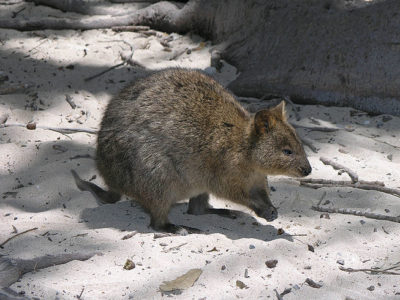
Quokka
Makes runways through the long grasses!
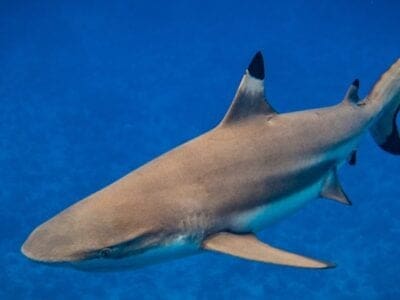
Reef Shark
Grey reef sharks can give birth without males
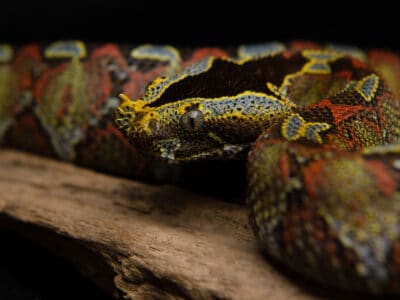
Rhino Viper
The river jack snake has a gigantic horn-like scale on the tip of its nose.
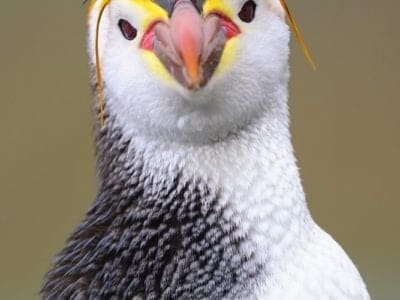
Royal Penguin
Can reach speeds of 20mph!
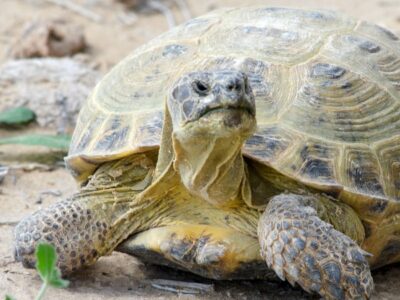
Russian Tortoise
Known by at least five different names
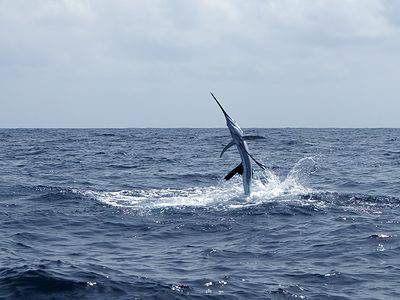
Sailfish
Fast billfish with a sail-like dorsal fin
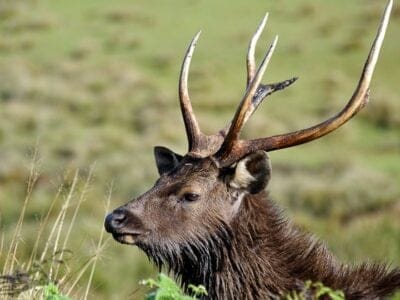
Sambar
Male sambars will compete for mates by clashing together with their antlers
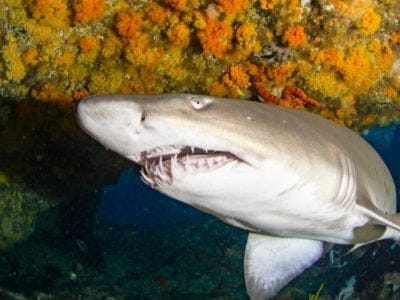
Sand Tiger Shark
The sand tiger is the shark most commonly seen in aquariums.
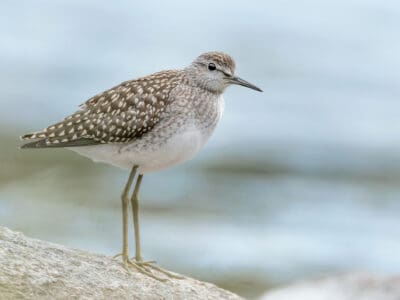
Sandpiper
Some sandpipers can migrate more than 8,000 miles without stopping!
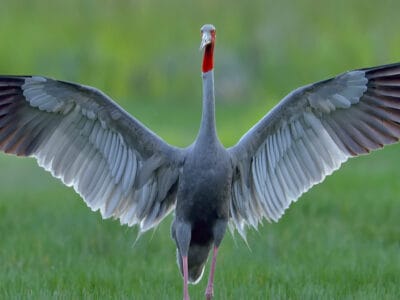
Sarus Crane
Parents use low calls to tell their chicks to freeze and lie still when danger lurks.
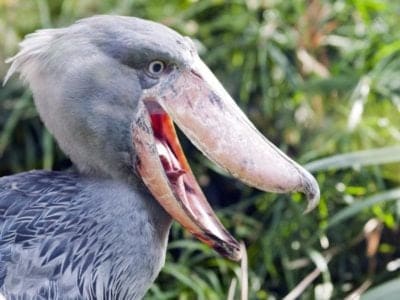
Shoebill Stork
Adults greet each other by clattering their bills together.
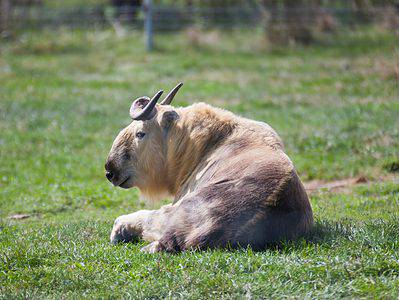
Sichuan Takin (Tibetan Takin)
The Sichuan takin is a national treasure in China and shares part of its range with the giant panda!
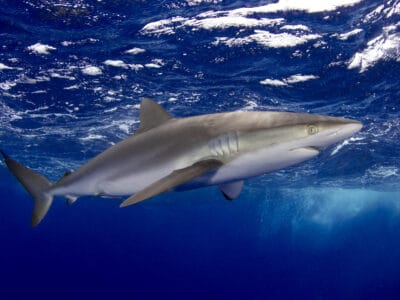
Silky Shark
Has an extremely acute sense of hearing
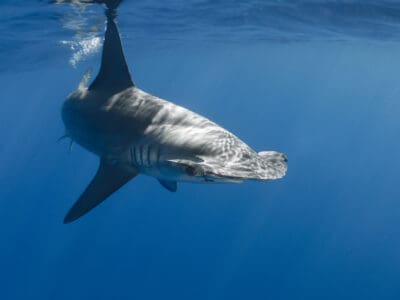
Smooth Hammerhead Shark
Congregate in large groups during annual migrations
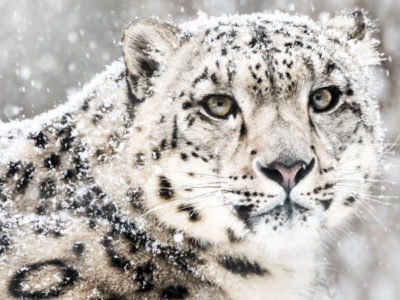
Snow Leopard
Unlike other big cats, snow leopards don’t roar.
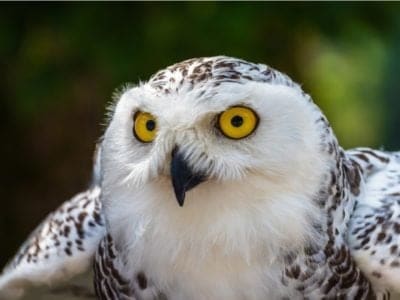
Snowy Owl
One of the largest owl species in the world!
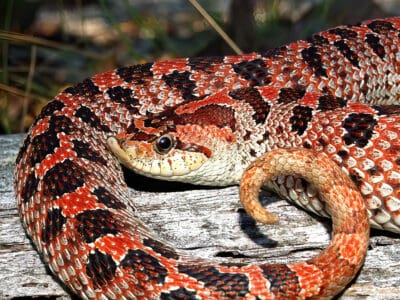
Southern Hognose Snake
The southern hognose snake has an upturned snout that enables it to dig through the soil.
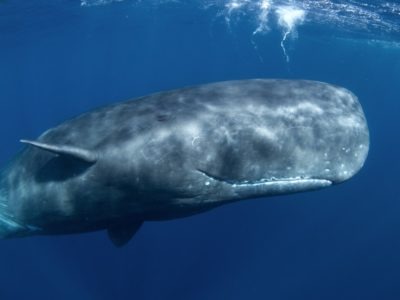
Sperm Whale
Each tooth weighs 1kg!
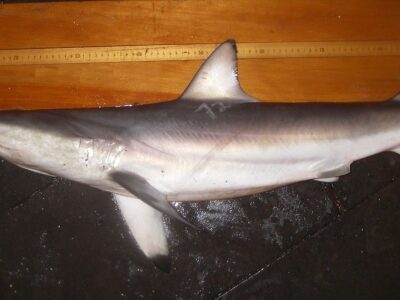
Spinner Shark
Can have up to 20 babies

Spiny Dogfish
Found in ocean waters worldwide!
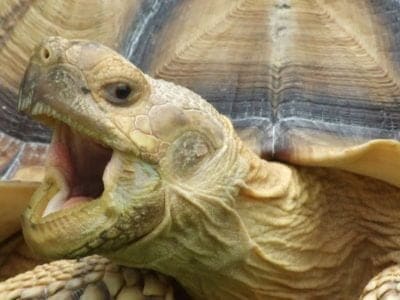
Sulcata Tortoise
Some cultures in Africa believe the sulcata tortoise is an intermediary between the people and their ancestors and gods.
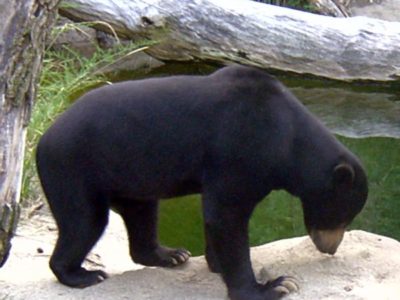
Sun Bear
The smallest species of bear in the world!
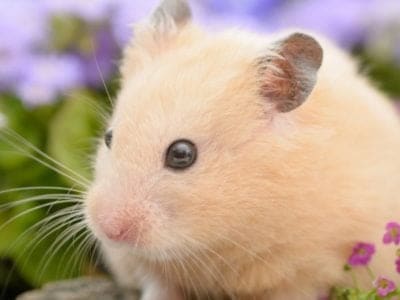
Syrian Hamster
Can get used to and respond to human voice
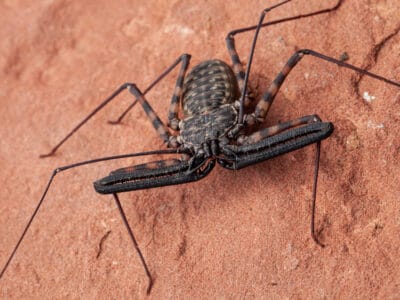
Tailless Whip Scorpion
The average lifespan of these strange creatures is 5 to 10 years; however, tailless whip scorpions have been known to live up to a whopping 15 years in captivity!

Takin
The takin can leap some 6 feet through the air
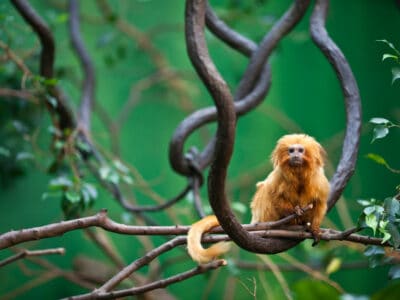
Tamarin
These tiny yet intelligent monkeys often give birth to fraternal twins.

Tarantula
More than 1000 species of tarantulas have been identified all around the world!
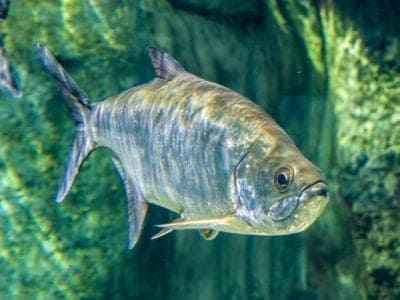
Tarpon
Its genus dates back to the Cretaceous period – 113 million years ago
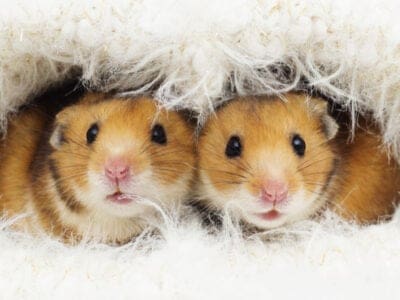
Teddy Bear Hamster
The oldest recorded teddy bear hamster was six and a half.
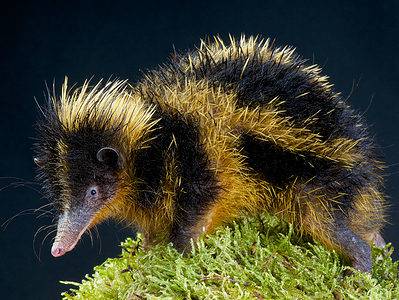
Tenrec
Hedgeho-like nocturnal insectivore
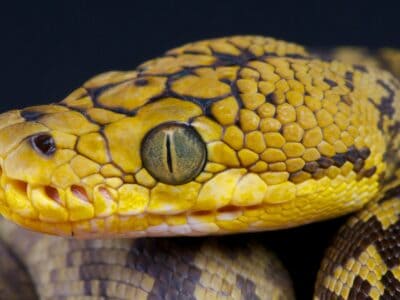
Timor python
Ironically, Timor pythons have never been found on the island of Timor.
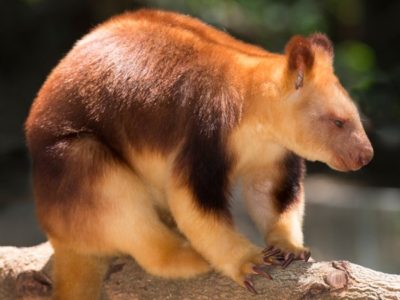
Tree Kangaroo
It’s the only macropod that lives in trees.
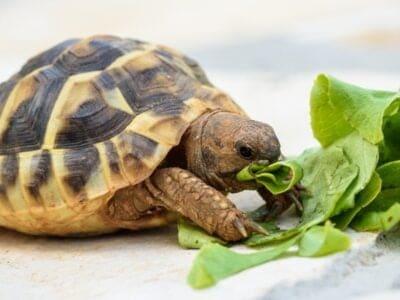
Turtles
Some species of aquatic turtles can get up to 70 percent of their oxygen through their butt.
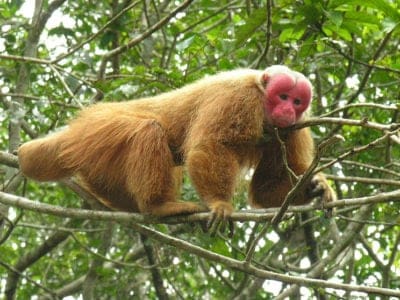
Uakari
Have a very short tail for their size!
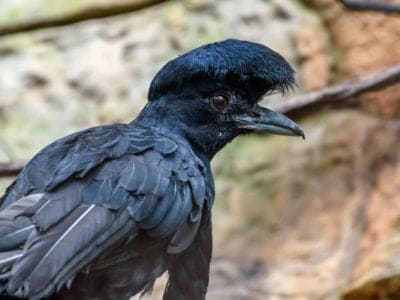
Umbrellabird
Migrates up and down the mountains!
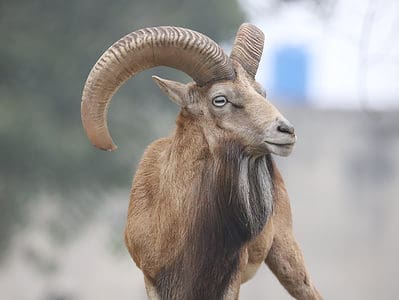
Urial
Urials are the ancestors of modern-day domesticated sheep.
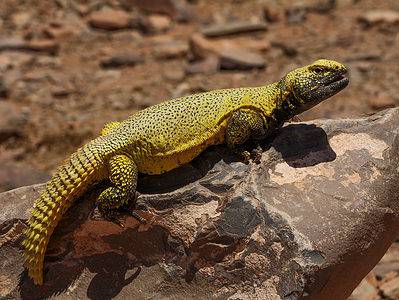
Uromastyx (Spiny-Tailed Lizard)
Spiny-tailed lizards "sneeze" out salt!
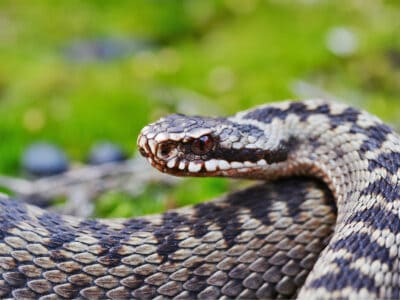
Viper
Vipers are one of the most widespread groups of snakes and inhabit most
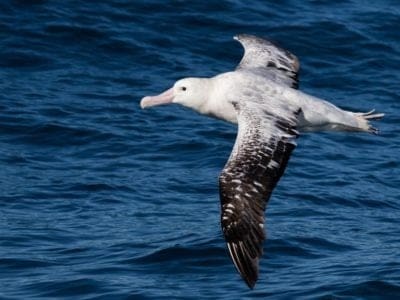
Wandering Albatross
Featured in “The Rime of the Ancient Mariner”
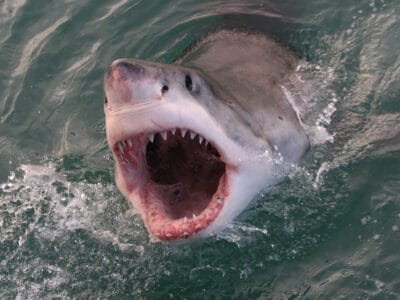
White Shark
White Sharks live in all of the world's oceans.
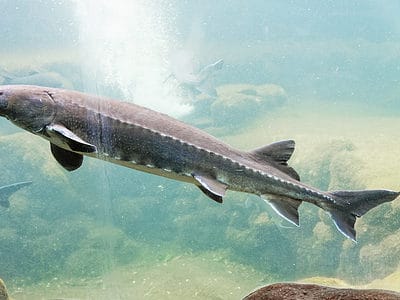
White Sturgeon
They don't have any teeth!
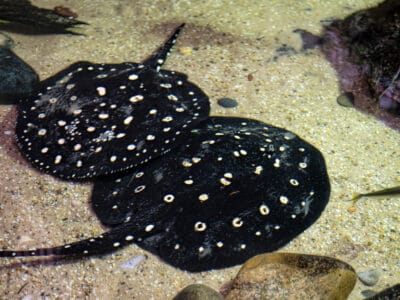
Xingu River Ray
The Xingu River ray is only found in the Xingu River in Brazil.
Vulnerable Species List
- African Golden Cat
- Aldabra Giant Tortoise
- American Paddlefish
- Anteater
- Aoudad Sheep
- Apennine Wolf
- Asian Carp
- Asian Palm Civet
- Atlantic Cod
- Babirusa
- Baleen Whale
- Bamboo Shark
- Banded Palm Civet
- Beauty rat snake
- Bhutan Takin
- Bilby
- Binturong
- Bird Snake
- Blacktip Reef Shark
- Blacktip Shark
- Boas
- Box Turtle
- Bull Trout
- Burmese Python
- Burrowing Frog
- Bushmaster Snake
- Cantil
- Capuchin
- Caribou
- Cheetah
- Chinese Cobra
- Clouded Leopard
- Cobras
- Cockatoo
- Coconut Crab
- Codfish
- Coelacanth
- Common Carp
- Conure
- Coral Snake
- Crested Gecko
- Crested Penguin
- Cricket
- Crocodylomorph
- Cubera Snapper
- Darwin’s Frog
- Deer Mouse
- Desert Rain Frog
- Dwarf Boa
- Dwarf Crocodile
- Eagle Ray
- Eastern Barred Bandicoot
- Eastern Box Turtle
- Evening Grosbeak
- Fainting Goat
- Finch
- Fritillary Butterfly
- Gaboon Viper
- Galapagos Tortoise
- Giant Armadillo
- Giant Clam
- Giant Panda Bear
- Golden Masked Owl
- Golden Mole
- Goonch Catfish
- Gopher Tortoise
- Goral
- Great White Shark
- Greenland Shark
- Ground Squirrel
- Haddock
- Herring
- Hippopotamus
- Hooded Seal
- Hornbill
- Horned Grebe
- Humboldt Penguin
- Hyacinth Macaw
- Ibex
- Indian Star Tortoise
- Jamaican Boa
- Jumping Spider
- Kamehameha Butterfly
- King Cobra
- Kitefin Shark
- Kodkod
- Komodo Dragon
- Kowari
- Leatherback Sea Turtle
- Lion
- Luna Moth
- Malayan Civet
- Manta Ray
- Mantella Frog
- Marine Iguana
- Marmoset
- Mola mola (Ocean Sunfish)
- Northern Fur Seal
- Oenpelli python
- Olm
- Orange Roughy
- Oregon Spotted Frog
- Ovenbird
- Paddlefish
- Pantaloon Bee
- Parrotfish
- Pea Puffer
- Peacock Spider
- Polar Bear
- Porbeagle Shark
- Potoroo
- Pygmy Marmoset (Finger Monkey)
- Python
- Quokka
- Reef Shark
- Rhino Viper
- Royal Penguin
- Russian Tortoise
- Sailfish
- Sambar
- Sand Tiger Shark
- Sandpiper
- Sarus Crane
- Shoebill Stork
- Sichuan Takin (Tibetan Takin)
- Silky Shark
- Smooth Hammerhead Shark
- Snow Leopard
- Snowy Owl
- Southern Hognose Snake
- Sperm Whale
- Spinner Shark
- Spiny Dogfish
- Sulcata Tortoise
- Sun Bear
- Syrian Hamster
- Tailless Whip Scorpion
- Takin
- Tamarin
- Tarantula
- Tarpon
- Teddy Bear Hamster
- Tenrec
- Timor python
- Tree Kangaroo
- Turtles
- Uakari
- Umbrellabird
- Urial
- Uromastyx (Spiny-Tailed Lizard)
- Viper
- Wandering Albatross
- White Shark
- White Sturgeon
- Xingu River Ray
Thank you for reading! Have some feedback for us? Contact the AZ Animals editorial team.



